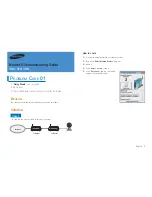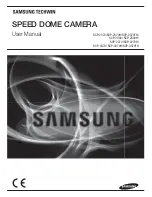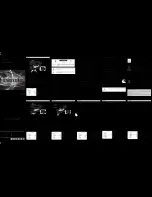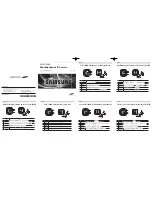
58
•
The Piranha XL Camera
imperfections will appear as vertical stripes in the image. If the white reference had imperfections
that caused dark features, there will be a bright vertical line during normal imaging. Similarly,
bright features will cause dark lines. It can be very difficult to achieve a perfectly uniform, defect-
free white reference. The following two approaches can help in minimizing the effects of white
reference defects:
1.
Move the white reference closer to or further away from the object plane such that it is out of focus.
This can be effective if the illumination profile changes minimally when relocating the white reference.
2.
If the white reference must be located at the object plane, then move the white reference in the scan
direction or sideways when flat field calibration is being performed. The camera averages several
thousand lines when capturing calibration reference images so any small imperfections are averaged
out.
3.
Use the cameras flat field calibration filter feature, as detailed in the user manual Flat Field Calibration
Filter section. This algorithm implements a low pass moving average that covers several adjacent pixels.
This filter can help minimize the effects of minor imperfections in the white reference. Note: this filter is
NOT USED in normal imaging.
Over Time, Some Pixels Develop Low Response
When flat field calibration is performed with a white reference as per the guidelines in the user
manual, all pixels should achieve the same response. However, over time, dust within the lens
extension tube may migrate to the sensor surface thereby reducing the response of certain pixels.
If the dust particles are very small, they may have only a minor effect on responsivity, but still
produce vertical dark lines that interfere with defect detection and need to be corrected.
Repeating the flat field calibration with a white reference may not be practical with the camera
installed in the system. The camera has a feature where the flat field coefficients can be
downloaded to the host PC and adjusted using a suitable application, such as Microsoft Excel. (See
section Setting Custom PRNU Coefficients for details. If the pixel location that has a low response
can be identified from the image, then the correction coefficient of that pixel can be adjusted,
saved as a new file, and then uploaded to the camera, thereby correcting the image without
performing flat field calibration.
See the user manual for details on downloading and uploading camera files using CamExpert.
Note that dust accumulation on the lens will not cause vertical lines. However, heavy accumulation
of dust on the lens will eventually degrade camera responsivity and focus quality.
Smeared & Distorted Images
The camera achieves its high responsivity by accumulating 4, 8 or 12 lines in the sensor. To
achieve a well-defined image, the multiple lines are summed together in a manner that matches
the motion of the image across the sensor. This synchronization is achieved by the user providing
an external synchronization (EXSYNC) signal to the camera, where one pulse is generated when the
object moves by the size of one object pixel. See ‘External Trigger Mode’ in the user manual.
Any transport motion that is not correctly reflected in the EXSYNC pulses will cause image
distortion in the scan direction. For standard line scan cameras, this type of image distortion may
not greatly affect edge sharpness and small defect contrast, thereby having minimal impact on
defect detection. However, TDI image quality is more sensitive to object motion synchronization
errors. The following subsections discuss various causes for poor image quality as a result of
EXSYNC not accurately reflecting object motion.
Содержание Piranha XL PX-HM-16K12B-00-R
Страница 12: ...10 The Piranha XL Camera Responsivity QE Plots...
Страница 13: ...The Piranha XL Camera 11 Mechanical Drawings...
Страница 66: ...64 The Piranha XL Camera Declaration Of Conformity...







































